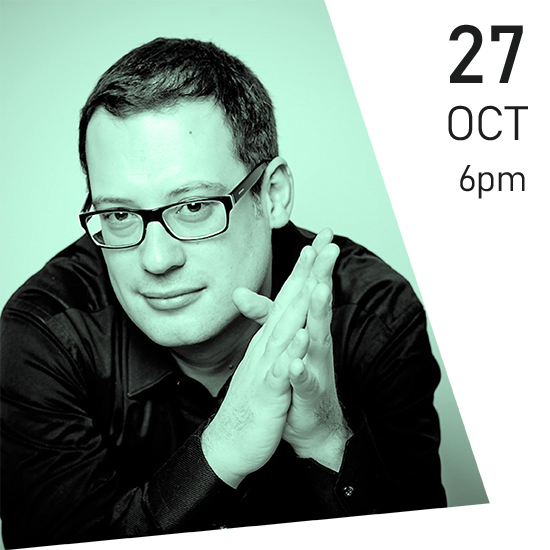 October 27, Sunday, 6.00 am
October 27, Sunday, 6.00 am
Igreja do Convento de Santa Clara do Funchal
Fernando Miguel Jalôto, organ
Ensemble Portingaloise
La Floreta
Catarina Costa e Silva
Diana Campóo
Thiago Vaz
Do Tento à Tentação visits the interesting and varied repertoire recorded in Iberian sources for organ − Porto, Braga, Coimbra and Madrid − highlighting both the works of contrapuntal writing (tento) and the peninsular dances (pavanas, xácaras, folias or villanos, among others), often improvised, exploring the curious confluence of the two musical genres in sacred contexts. Instrumental elaborations that alternate polyphonic and homophonic writing, the tentos could be used in different liturgical moments, following the ecclesiastical modes of plainsong.
On the other hand, the varied dances that circulated throughout Europe in the seventeenth and eighteenth centuries were privileged forms, due to their musical composition, the regularity of their structure and the inexhaustible possibilities of variation, constituting a ubiquitous repertoire in the soundscape of the time, known by everyone, and present in halls, streets and churches. Due to its timbral richness and frequent use, the organ was also a very familiar instrument, not only in the liturgical or religious context, but also in secular environments and functions. In this danced concert, a drama unfolds based on the interaction of four characters: the Chapel Master / Organist, the Singer, and two Ladies. The dramatic speech was constructed from musical and choreographic sources in dialogue with literary testimonies, both of ecclesiastical origin – such as excerpts from Definições e apontamentos do Capitulo geeral que se celebrou em este moesteiro de Sancta Cruz [de Coimbra] em o anno de 1575. manda que guarde en tudos nossos, moesteiros – as well as those of a secular nature – such as a news item in Gazeta de Madrid (1723), or the description of a foreign traveler, collected in William Beckford’s diary in Portugal and Spain. They all highlight the ambivalent character of the organ repertoire over this long period of time, the tensions associated with its transversality, and the role that dance had as an essential practice for sociability, but also as a musical model. The different dances, in vogue at the time throughout Europe, with particular emphasis on those of Iberian tradition or with a marked presence in the Peninsula, constitute the repertoire recorded in the sources used, and it is possible to distinguish original choreographic versions as well as later instrumental elaborations. The original choreographic repertoire (description of the steps, figures and gestures to be performed by the dancers) is also taken from contemporary foreign sources, Spanish and French, such as Libro de danzar by don Baltasar de Rojas Pantoja and Aimable Vainqueur, dance nouvelle dancée devant le Roy à Marly de la composition de Monsieur Pecour et mise au jour par Mr. Feuillet (1701), as well as Portuguese ones, namely Choregraphie o Arte para saber danzar todas suertes de danzas por choregraphie… (Felix Kinski, 1751).
This is a journey through a repertoire at the hinge between sacred and profane culture, between the high choir and drawing room, in a permeability and conciliation that characterized the complex Iberian cultural profile, still with reminiscences of the Siglo de Oro (seventeenth century), but already announcing the most gallant and cosmopolitan society of the eighteenth century.
— CATARINA COSTA E SILVA —
Programme
Manuel Rodrigues Coelho (ca.1555-1635)
¬ Terceiro Tento do primeiro tom
¬ Versos [do Magnificat] do segundo tom para se cantarem ao órgão
Anonymous (Flores de Música, compilação de Antonio Martín y Coll, 1706)
¬ Pavana & Pavana Sexquialtera
¬ Marizápalos
Anonymous (MM42 – Biblioteca Pública Municipal do Porto)
¬ Espanholetas de primeiro tom
Gaspar Sanz (1640-1710)
¬ Marizápalos
Bartolomeu de Olagué (?-1658)
¬ Xácara de primeiro tom
Carlos Seixas (1704-1742)
¬ Sonatain F major A 6:3
› Moderato
› Giga [Allegro]
› Minueto
Anonymous (Flores de Música, compilação de Antonio Martín y Coll, 1706)
¬ Villano
José Torrelhas (séc. XVII)
¬ Canção do primeiro tom
Bernardo Pasquini (1637-1710)
¬ Partite sopra l’ Aria della Folia da Spagna
André Campra (1669-1764)
¬ L’aimable vainqueur
Anonymous (MS 1394 Biblioteca Pública Municipal do Porto)
¬ Menuet de le mable [de L’Aimable?]
Anonymous (MM42 Biblioteca Pública Municipal do Porto)
¬ Folias de primeiro tom
Arcangelo Corelli (1653-1713)
¬ Allegro e Adagio
(Sonate a Violino e Violone o Cimbalo Op.V, nº 3)
Manuel Rodrigues Coelho
¬ Versos [do Magnificat] do terceiro tom para se cantarem ao órgão
